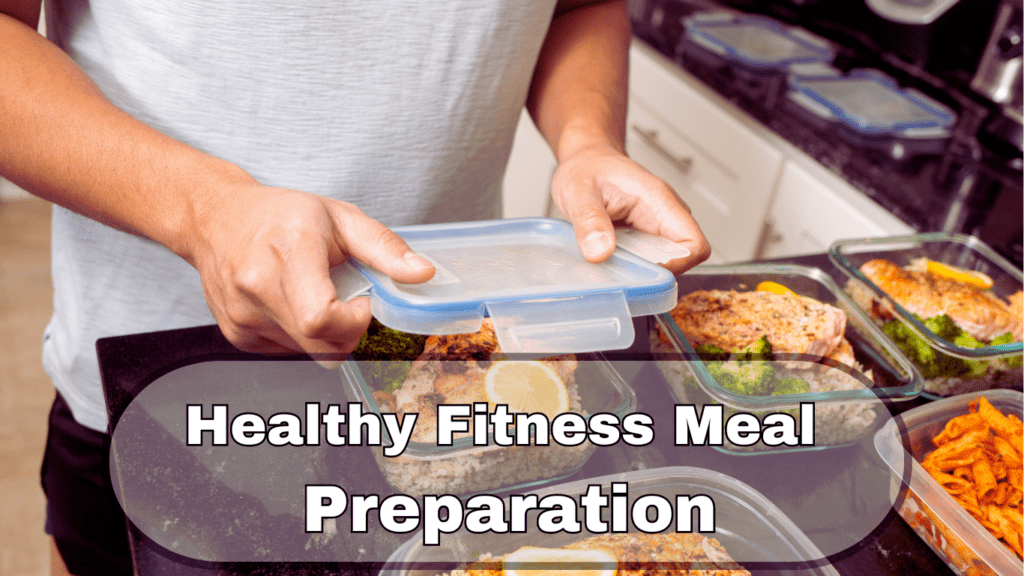How to Burn 1000 Calories a Day: The Key to Achieving Your Fitness Goals
In this article, we will explore practical strategies on how to burn 1000 calories a day through effective workouts and mindful eating, setting you on the path to your fitness goals.
“Burning 1000 calories a day? Sounds like a magic trick, right? Well, unless your hobby is running marathons in your sleep, it’s going to take a little more effort than that!”
While that might sound like a joke, there’s some truth to it. Burning 1000 calories a day is a challenge, but with the right plan, it’s entirely possible, and it could help you reach your fitness goals faster than you think.
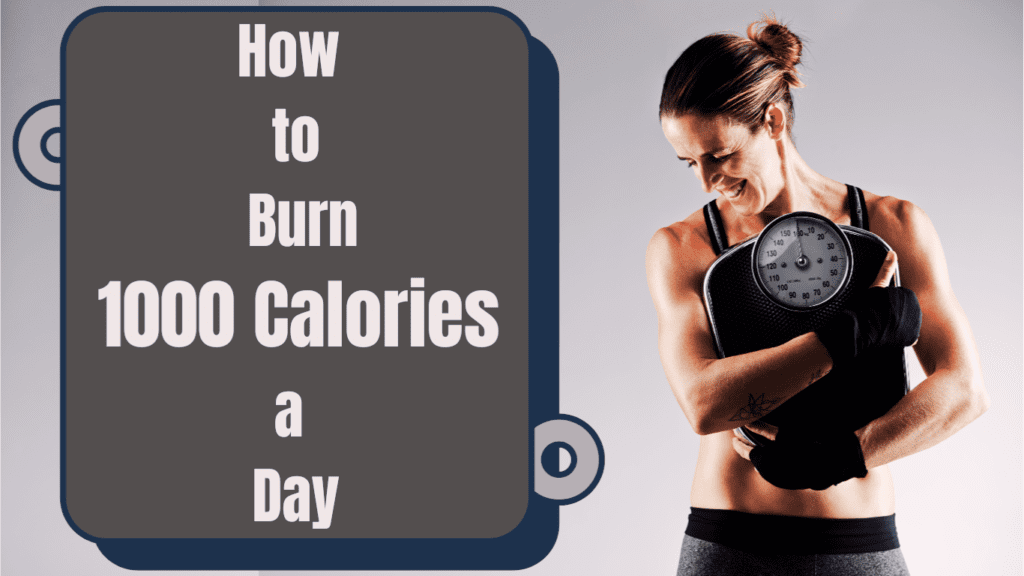
Burning calories is essential to weight loss, and for many fitness enthusiasts, hitting a 1000-calorie burn daily feels like the ultimate milestone. But is it really that tough? Not at all. How to burn 1000 calories a day can become part of your daily routine with the right mindset, a mix of activities, and the proper understanding of how your body works.
Let’s dive into why burning calories matters in the first place. The basic idea is simple: when you burn more calories than you consume, you create a “calorie deficit.” This is key for weight loss because your body starts to use stored fat for energy when it’s in this deficit. But calorie burning isn’t just for weight loss—it’s essential for overall wellness. Boosting your metabolism, improving heart health, and maintaining muscle mass all tie back to how many calories you’re burning daily. So, for those of you setting fitness goals, whether that’s trimming fat, building endurance, or just staying active, understanding how to burn calories efficiently is crucial.
How to burn 1000 calories a day may seem like a daunting task, but it’s more achievable than you think. The secret lies in finding the right combination of exercise and lifestyle changes to make it part of your everyday routine. After all, you’re not just aiming for a quick fix—you’re working toward lasting, healthy habits.
Let’s break it down.
First, you need to understand the science behind burning calories. Your body uses energy all the time, even when you’re doing nothing at all. This is thanks to your metabolism, which is the rate at which your body converts food into energy. Your Basal Metabolic Rate (BMR) is the number of calories you burn just to keep your body functioning at rest. Activities like walking, exercising, or even fidgeting ramp up your energy expenditure, and this is where the real calorie burn happens.
Subscribe And Get Our Free E-Book:Unlocking The Power Of Nutrition-Supplements, Substitutes, and Superfoods!
Different activities burn different amounts of calories, depending on how intense they are and how long you perform them. For instance, running, cycling, or high-intensity interval training (HIIT) can torch hundreds of calories in an hour. But your daily calorie burn is also influenced by factors like your age, weight, gender, and fitness level. A younger, more active person will naturally burn more calories than someone older or more sedentary. That’s why creating a strategy to burn 1000 calories a day has to be personalized to your specific body and lifestyle.
Now, why aim for burning exactly 1000 calories a day? For starters, it’s a great benchmark for anyone looking to lose weight faster. Burning 1000 calories a day through exercise, combined with a balanced diet, can help you lose roughly 2 pounds a week (since 3,500 calories equals one pound of fat). This goal is also perfect for athletes or those training for an event because it builds stamina, endurance, and overall fitness levels.
However, it’s important to approach this with a healthy mindset. While how to burn 1000 calories a day might be your goal, it shouldn’t turn into an obsession. Overtraining can lead to burnout or injury, which defeats the purpose of staying active. Balance is key, so make sure to mix in recovery days, adequate nutrition, and proper sleep.
Burning 1000 calories daily can also be broken up into manageable chunks throughout the day. For example, you could do 300-400 calories in a morning workout, 100-200 in some afternoon activity, and finish up the remaining calories through evening exercises or even by staying active at work (taking stairs, standing desks, etc.). It’s about integrating calorie-burning activities into your daily routine so that it doesn’t feel overwhelming.
Here’s another fun fact: non-exercise activity thermogenesis (NEAT) is responsible for burning a significant number of calories throughout the day. NEAT includes activities like cleaning, cooking, and walking the dog. By staying active, even outside of the gym, you can rack up hundreds of calories burned without even realizing it.
Setting the goal of burning 1000 calories a day is an exciting challenge for fitness enthusiasts. It’s relevant not only for weight loss but also for improving overall wellness, boosting metabolism, and achieving long-term health benefits. With the right balance of exercise, daily activities, and an understanding of how your body burns calories, this goal is absolutely attainable. In the next part of this guide, we’ll explore specific exercises and routines that can help you hit that daily burn efficiently. Stay tuned!
1000 Calorie Per Day Deficit Video
The Science of Calories: Understanding the Basics
Did you know that the average adult burns about 70 calories per hour while simply sleeping? That’s right! Even in your dreams, your body is hard at work using energy. This fascinating fact underscores the importance of understanding how to burn 1000 calories a day and why knowing about calories is essential for anyone looking to improve their fitness journey.
What is a Calorie?
So, what exactly is a calorie? In simple terms, a calorie is a unit of energy. It measures how much energy food provides when consumed and how much energy your body needs to function. Think of calories as the fuel your body requires for everything, from moving your muscles to keeping your organs working properly. Whether you’re engaging in intense exercise or simply sitting on the couch, your body is continually burning calories. This is why knowing how to burn 1000 calories a day is so vital for achieving your fitness goals.
Caloric Intake vs. Caloric Burn (Energy Balance)
Now, let’s delve into the concept of caloric intake vs. caloric burn, often referred to as energy balance. The fundamental principle is straightforward: when you consume more calories than your body uses, you gain weight. Conversely, when you burn more calories than you take in, you lose weight. This state is known as a caloric deficit. It’s crucial for weight loss because, over time, this deficit encourages your body to use stored fat for energy, leading to weight loss.
For example, if you aim to lose one pound of fat, you need to create a deficit of about 3,500 calories. This means that if you can consistently maintain a caloric deficit of 500 calories per day, you could potentially lose one pound a week. This is where learning how to burn 1000 calories a day comes into play. By burning a significant number of calories through exercise and daily activities, combined with a moderate caloric intake, you can create a larger deficit and accelerate your weight loss journey.
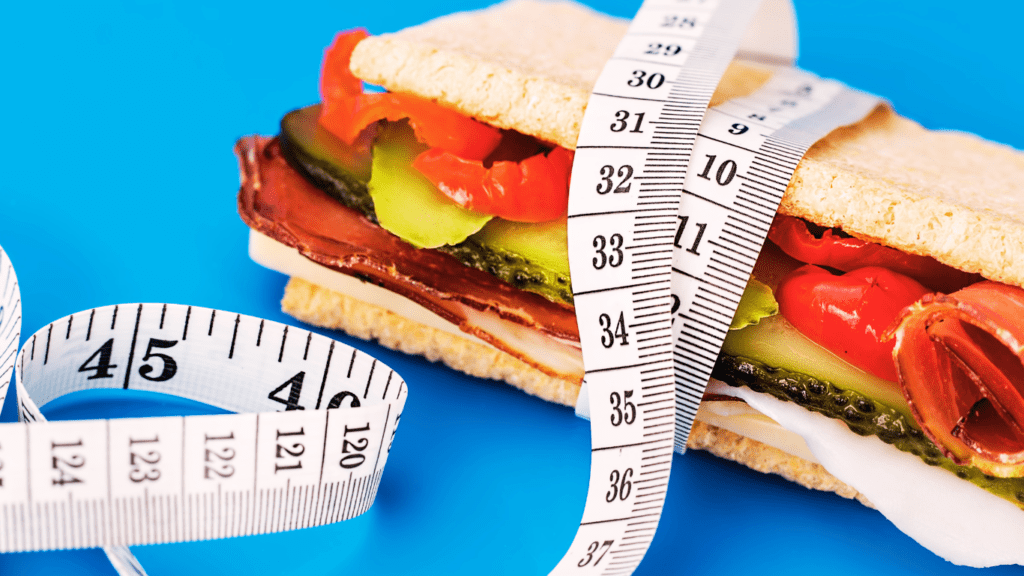
Metabolism and BMR
Understanding your metabolism and Basal Metabolic Rate (BMR) is vital for comprehending how many calories you burn. Metabolism refers to all the chemical processes that occur within your body to maintain life, including breaking down food and converting it into energy. Your BMR is the number of calories your body needs to perform essential functions while at rest, such as breathing, circulation, and cell production.
Many factors influence how many calories a person burns, including age, gender, weight, and fitness level. For instance, younger individuals generally have a higher BMR compared to older adults, largely due to muscle mass. Men tend to have a higher BMR than women because they usually have more muscle mass. Additionally, a person with a higher fitness level often has a more efficient metabolism, allowing them to burn calories more effectively during exercise.
The Impact of Age and Activity Level
As you age, you may find that your metabolism slows down, which can make it more challenging to maintain or lose weight. This is where understanding how to burn 1000 calories a day becomes even more relevant. By incorporating regular exercise and maintaining an active lifestyle, you can help counteract the natural decline in your metabolism.
Now, let’s briefly touch on how to calculate your BMR. Several equations, like the Mifflin-St Jeor equation, can estimate your BMR based on your age, weight, height, and gender. Once you have this number, you can determine how many calories you burn throughout the day based on your activity level. Adding in exercise can help increase this number, making it easier to achieve a caloric deficit.
Creating a Personalized Caloric Plan
Understanding your caloric needs can help you create a personalized plan for burning calories. For instance, if your BMR is 1,500 calories and you lead a sedentary lifestyle, you might need around 1,800 to 2,000 calories a day to maintain your weight. To burn 1000 calories a day, you would need to focus on activities that boost your daily caloric burn.
Incorporating both aerobic exercise and strength training into your routine can significantly help you reach this goal. High-intensity workouts, such as running, cycling, or swimming, can burn hundreds of calories in just one hour. Strength training is equally important because building muscle mass can increase your BMR, meaning you’ll burn more calories even at rest.
Ultimately, the journey to understanding how to burn 1000 calories a day is about finding the right balance between caloric intake and caloric burn. By grasping the basics of calories, energy balance, and metabolism, you’ll be better equipped to create a sustainable plan that works for your lifestyle.
So, as you continue on your fitness journey, keep these principles in mind. They will not only guide you toward burning more calories but also help you develop healthier habits that can lead to long-lasting results. In the next part, we’ll explore effective strategies and workouts to help you reach your daily caloric burn goals.
Quick Calorie Burn Guide: Choose Your Activities:
Use this guide to see how many calories you can burn per hour with various activities at different intensities. Whether you prefer high-intensity workouts or steady-paced activities, mixing these exercises can help you reach that 1000-calorie goal. Add NEAT (Non-Exercise Activity Thermogenesis) activities like cleaning or gardening to your day for extra calorie burn without extra workouts.
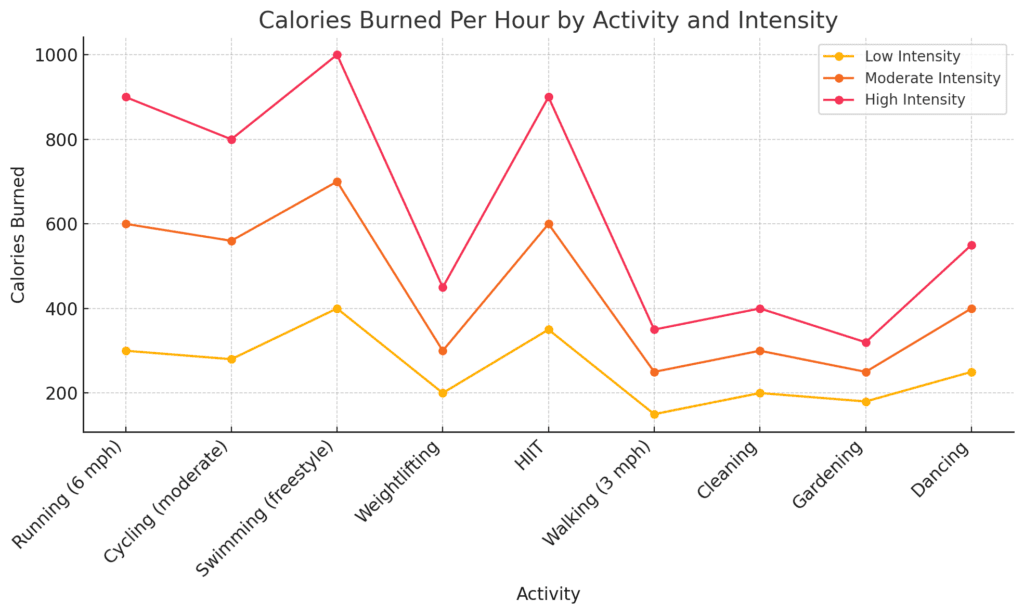
This chart shows the estimated calories burned per hour across various activities at low, moderate, and high intensities. With this visual aid, readers can better tailor their workout plans by mixing activities and intensities to reach that 1000-calorie goal. For instance:
- High-Intensity Running (6 mph) burns around 900 calories per hour, making it a top option for quickly approaching the goal.
- Moderate Intensity Activities like cycling and swimming offer a balance of high calorie burn (560-700 calories) and manageable effort.
- NEAT Activities such as cleaning and gardening add calorie burn without a formal workout, helping integrate calorie-burning effortlessly into daily life.
Creating a Caloric Deficit
Why did the calorie go to school? Because it wanted to be a little “smarter” in the body! While that may be a lighthearted take, understanding how to burn 1000 calories a day is no joke when it comes to achieving your fitness goals. So, let’s dive into the concept of creating a caloric deficit—an essential part of any successful weight-loss strategy.
What is a Caloric Deficit?
A caloric deficit happens when you burn more calories than you consume. It’s a simple yet powerful concept that lies at the heart of weight loss. When your body operates in this deficit, it starts to use stored fat for energy, leading to weight loss over time. Think of it this way: your body is like a bank. If you spend more than you earn, you’ll eventually deplete your savings. Similarly, if you burn more calories than you take in, your body will start using its “savings”—the stored fat.
How a 1000-Calorie Burn Fits Into Your Deficit
Now, let’s explore how burning 1000 calories a day fits into this caloric deficit equation. Understanding this relationship is crucial for anyone serious about losing weight. Here’s the math: if you consume 2000 calories in a day but burn 1000 calories through various activities and exercise, your net caloric intake becomes 1000 calories. This creates a significant caloric deficit that promotes weight loss.
To break it down further, let’s consider an example. Imagine you have a daily caloric intake goal of 2000 calories based on your nutritional needs. If you follow a balanced diet and stay within this limit but manage to burn 1000 calories through exercise or daily activities, your body is left with only 1000 calories of net intake. That’s a caloric deficit of 1000 calories!
Why is this significant? A caloric deficit of 3500 calories is generally believed to equate to about one pound of weight loss. So, if you can consistently maintain this 1000-calorie deficit each day, you could potentially lose two pounds a week. It’s important to remember that this is an approximate figure and individual results may vary based on various factors, but it illustrates how effective creating a caloric deficit can be.
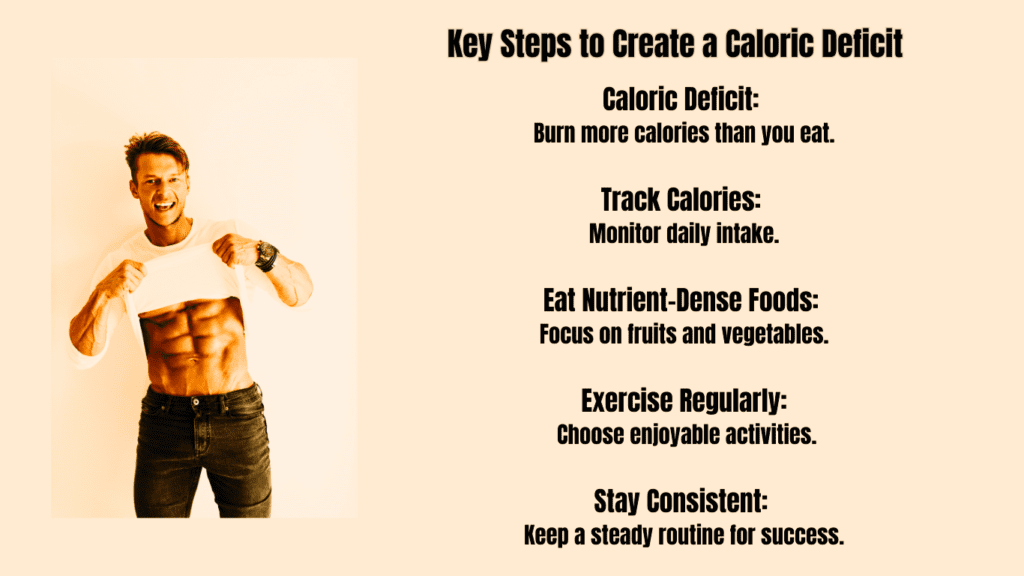
Making It Work: Your Daily Plan
Now, how do you go about achieving a caloric deficit of this magnitude? Here’s a straightforward strategy to help you understand how to burn 1000 calories a day effectively.
- Monitor Your Caloric Intake: Start by tracking what you eat throughout the day. There are various apps available that make this task easy. Knowing how many calories you consume will help you adjust your meals and snacks accordingly. If your goal is to eat 2000 calories, plan your meals around this number.
- Choose Nutrient-Dense Foods: Focus on foods that are low in calories but high in nutrients. Vegetables, lean proteins, whole grains, and fruits should be staples in your diet. These foods not only keep you full but also provide the energy you need to stay active.
- Incorporate Exercise into Your Routine: Find activities you enjoy, whether that’s running, cycling, swimming, or even dancing. Aim to burn those 1000 calories through a combination of aerobic exercises and strength training. For example, you might run for 30 minutes and then do 30 minutes of strength training. You can also break it up throughout the day with activities like walking, taking the stairs, or playing sports.
- Stay Active Outside the Gym: Look for ways to incorporate physical activity into your daily routine. Walking during breaks, gardening, or playing with your kids are excellent ways to increase your caloric burn without feeling like you’re “working out.”
- Be Mindful of Portion Sizes: Overeating, even healthy foods, can lead to exceeding your caloric intake. Use smaller plates, and pay attention to serving sizes to help you stay within your caloric goals.
Understanding Energy Balance Over Time
It’s important to remember that weight loss isn’t just about what you do in one day. Creating a caloric deficit and understanding how to burn 1000 calories a day requires consistency over time. This means adhering to your caloric intake and activity levels regularly, allowing your body to adjust and respond to your efforts.
Ultimately, weight loss is a gradual process. Everyone’s body responds differently to dietary changes and exercise, so patience is essential. If you find that you’re not losing weight as expected, it may be helpful to reassess your caloric intake or the intensity and duration of your workouts.
Understanding the concept of a caloric deficit and how to create one is critical for effective weight loss. By burning 1000 calories a day and managing your caloric intake, you can develop a sustainable approach to reaching your weight loss goals. Remember, the journey toward a healthier you takes time and effort, but with the right strategies in place, you can make it happen.
As you continue to explore effective methods for how to burn 1000 calories a day, keep in mind that balance, patience, and consistency are your best allies. In the next part, we’ll discuss some specific exercises and activities that can help you achieve that calorie burn efficiently.
Realistic Ways on How to Burn 1000 Calories a Day
Did you know that engaging in just 30 minutes of vigorous exercise can increase your metabolism for up to 24 hours post-workout? That’s a fantastic way to boost your caloric burn! However, if you’re serious about learning how to burn 1000 calories a day, you’ll need to amp up your activity levels significantly. This section is the heart of your article, where we’ll explore realistic ways to reach that goal through various activities. By breaking it down into cardio, strength training, and daily activities, we can create a practical roadmap for burning those calories efficiently.
Cardio Activities
Cardio exercises are among the most efficient ways to burn calories. Let’s delve into some popular options and how you can maximize your caloric burn.
Running
Running is an excellent calorie burner, with high-intensity running burning between 600 to 900 calories per hour depending on your speed, weight, and the terrain. For example, running at 8 mph for about 60 to 70 minutes can easily help most individuals burn over 1000 calories. If you’re new to running, you can start at a slower pace and gradually increase your speed and distance. Remember to include a warm-up and cooldown to prevent injury.
Cycling
Cycling is another fantastic cardiovascular workout that can burn between 500 to 1000 calories per hour at moderate to high intensity. Engaging in a spin class or cycling at 14 to 16 mph can help you burn those 1000 calories in about 75 minutes. If you prefer outdoor cycling, consider hilly terrains for an added challenge, which can boost your caloric expenditure.
HIIT (High-Intensity Interval Training)
HIIT workouts are known for their efficiency. A 45-minute HIIT session can burn between 800 to 1000 calories due to the afterburn effect known as EPOC (Excess Post-exercise Oxygen Consumption). This means your body continues to burn calories even after the workout is finished, making HIIT a powerful tool for anyone looking to understand how to burn 1000 calories a day effectively.
Swimming
Swimming is another full-body workout that can burn between 700 to 1000 calories in an hour of vigorous swimming. This low-impact exercise is excellent for those with joint issues, as it provides a great workout without the strain. Try different strokes and incorporate speed intervals to maximize your caloric burn while enjoying the water.
How to Burn 1000 Calories a Day through Strength Training
While strength training may not burn as many calories as cardio in the moment, it plays a critical role in increasing your metabolism for hours post-workout.
Circuit Training
Circuit training involves performing a series of compound exercises with minimal rest in between. This method can burn around 500 to 700 calories in an hour. By combining strength training with cardio, you can boost muscle mass and increase your daily caloric burn, which is essential for achieving that 1000-calorie goal.
Resistance Training
Lifting weights may not yield immediate calorie burns, but the muscle you build increases your resting metabolic rate (RMR), helping you burn more calories overall. For instance, for every pound of muscle you gain, you burn an additional 6-10 calories per day, even at rest. A practical tip for maximizing your strength workouts is to combine resistance training with short bursts of cardio, like 1-2 minutes of jumping jacks or burpees between sets. This not only elevates your heart rate but also keeps the workout dynamic and engaging.
Daily Activities (NEAT – Non-Exercise Activity Thermogenesis)
Daily activities, often overlooked, can significantly contribute to your caloric burn. This is where NEAT (Non-Exercise Activity Thermogenesis) comes into play.
Walking
Walking is one of the simplest and most effective ways to increase your caloric burn. A brisk walk at a pace of 3.5 to 4 mph for about 2 to 3 hours throughout the day can help you reach 1000 calories burned. To make this more manageable, you can split it into intervals—taking a 15-minute walk after each meal or opting to walk for errands instead of driving. Every step counts, and these small changes can add up quickly.
Housework
Believe it or not, engaging in vigorous house cleaning, gardening, or moving furniture can burn about 200 to 300 calories per hour. Not only does this help you maintain a tidy space, but it also provides a solid workout. For example, combining tasks—like vacuuming, scrubbing floors, and tidying up—can give you a full-body workout while keeping your home clean and organized.
Standing or Desk Work
Switching to a standing desk or simply standing for extended periods during your workday can also contribute to burning more calories. Standing burns more calories than sitting—about 50 calories more per hour. Small changes to your daily habits, such as standing during phone calls or using a counter for your laptop instead of sitting, can significantly increase your caloric expenditure over time.
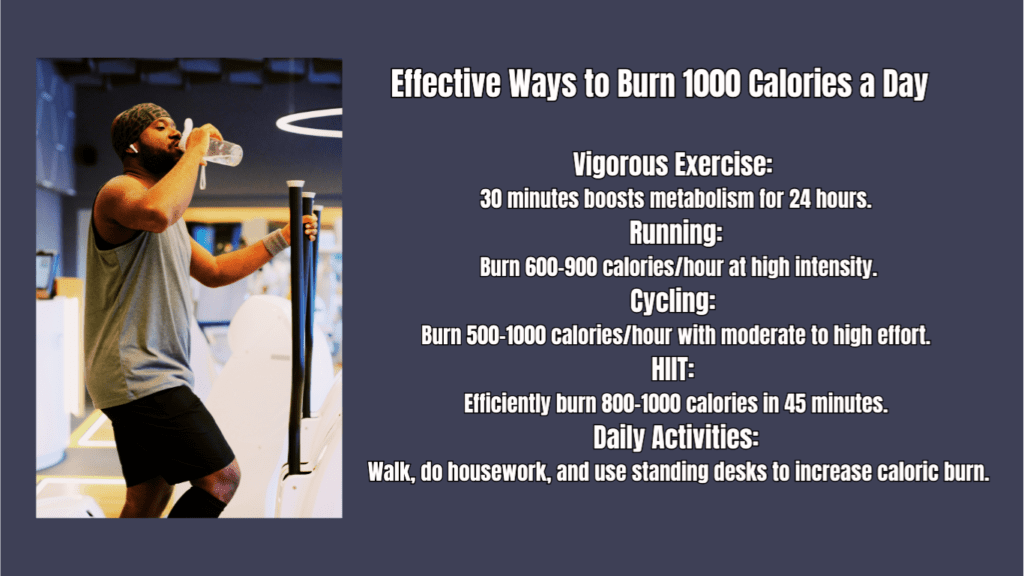
How to Burn 1000 Calories a Day: Putting It All Together
Now that we’ve explored various activities, it’s crucial to recognize that achieving a 1000-calorie burn requires a combination of strategies. Finding what works best for you is essential. Here are some practical tips to help you effectively burn those calories throughout the day:
- Plan Your Workouts: Schedule your cardio and strength training sessions to ensure you’re consistently engaging in calorie-burning activities.
- Mix It Up: Variety is key! Alternating between different cardio workouts and incorporating strength training will keep you motivated and engaged.
- Stay Active During Breaks: Use break times at work or home to engage in quick bursts of activity, like a set of jumping jacks or a brisk walk.
- Track Your Progress: Use a fitness tracker or app to monitor your daily activity levels and caloric burn. This will help you stay accountable and make necessary adjustments to meet your goals.
- Stay Hydrated: Proper hydration is essential for optimal performance. Drinking water before, during, and after your workouts helps maintain energy levels and supports overall health.
Estimated Time to Burn 1000 Calories (for a 155 lb person)
| Activity | Intensity | Approximate Time Needed |
|---|---|---|
| Running (8 mph) | High | 60-70 minutes |
| Cycling (14-16 mph) | Moderate-High | 75 minutes |
| HIIT | High | 45-60 minutes |
| Swimming (vigorous) | High | 60 minutes |
| Walking (3.5-4 mph) | Moderate | 150-180 minutes |
| Housework (vigorous cleaning) | Moderate | 4-5 hours |
| Circuit Training | Moderate-High | 90-120 minutes |
| Resistance Training | Mixed (w/ cardio bursts) | 2 hours |
Note: This table estimates calorie burn based on a 155 lb individual, with variations expected based on body weight, metabolism, and exercise intensity. Engaging in multiple activities throughout the day can help diversify your calorie burn and maintain interest in your fitness routine.
In conclusion, learning how to burn 1000 calories a day is not only achievable but also a rewarding journey toward better health and fitness. By incorporating a mix of cardio, strength training, and daily activities into your routine, you can create a sustainable plan that aligns with your lifestyle and goals.
Remember, consistency is key, and every little bit adds up. By committing to a balanced approach and finding joy in your activities, you’ll be well on your way to successfully burning 1000 calories a day and enhancing your overall well-being. In the next part, we’ll discuss how to maintain your progress and make adjustments as needed to keep your fitness journey on track.
Combining Diet with Exercise for Maximum Effect: How to Burn 1000 Calories a Day
You might be burning 1000 calories a day, but if you’re still downing a couple of pizzas and sugary drinks, you’re probably not seeing the results you desire. It’s like running a marathon while carrying a backpack full of rocks—you’re putting in the effort, but the extra weight holds you back! Achieving your fitness goals requires more than just exercise; it also involves making smart dietary choices. Understanding how to burn 1000 calories a day is essential, but combining it with mindful eating will enhance your results and improve your overall well-being.
Importance of Diet
While exercise plays a significant role in burning calories, diet is equally crucial. If you focus solely on how to burn 1000 calories a day through exercise, you may find it challenging to create a caloric deficit for weight loss. It’s essential to adopt a holistic approach that balances both exercise and nutrition. Research shows that individuals who combine physical activity with a balanced diet achieve their weight loss goals more effectively than those who rely solely on one or the other.
Smart Calorie Reduction
When considering how to burn 1000 calories a day, you may be tempted to resort to fad diets that promise quick results. However, these diets are often unsustainable and can lead to nutritional deficiencies. Instead, focus on nutrient-dense foods that support your metabolism and overall health. Here are some key components to consider:
- Lean Protein: Foods like chicken, turkey, tofu, and legumes are essential for muscle repair and growth. Protein helps maintain muscle mass while losing fat, which is vital for keeping your metabolism elevated.
- Fiber-Rich Carbs: Incorporate whole grains, fruits, and vegetables into your diet. Fiber keeps you full longer and helps regulate blood sugar levels, making it easier to resist unhealthy snacks.
- Healthy Fats: Avocados, nuts, seeds, and olive oil are sources of healthy fats that are satisfying and help support heart health. They also assist in the absorption of fat-soluble vitamins.
By focusing on these nutrient-dense foods, you can make smart calorie reductions without feeling deprived.
Portion Control & Healthy Eating
Now, let’s talk about practical strategies for reducing 300-500 calories from your daily intake. Achieving a caloric deficit doesn’t mean you have to starve yourself or eliminate entire food groups. Instead, consider these simple adjustments:
- Swap Sugary Drinks for Water or Green Tea: Soft drinks, juices, and sugary beverages can contain hundreds of calories. Opting for water or herbal tea not only reduces calorie intake but also keeps you hydrated.
- Eat More Vegetables: Fill your plate with colorful, non-starchy vegetables. They are low in calories but high in nutrients, helping you feel full without adding excessive calories.
- Avoid Processed Foods: Processed foods are often high in added sugars, unhealthy fats, and empty calories. Cooking meals from scratch with whole ingredients gives you control over what you’re consuming and helps you make healthier choices.
- Mindful Snacking: When you feel the urge to snack, opt for healthier options like fruits, nuts, or yogurt. Pre-portion your snacks to avoid mindless eating and to better manage your calorie intake.
- Monitor Your Portions: Using smaller plates can help you control portion sizes. Even when eating healthy foods, it’s essential to be mindful of how much you consume.
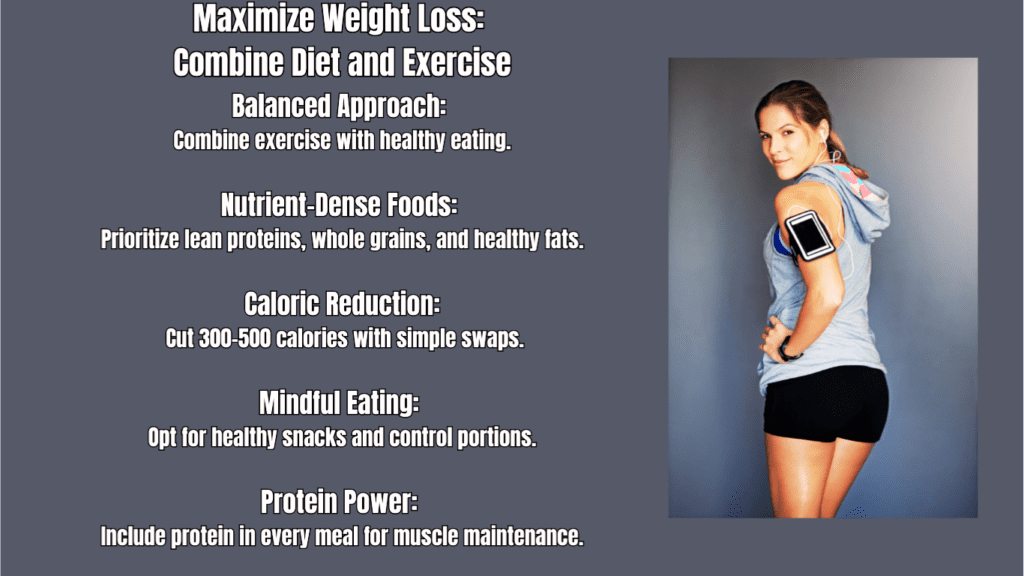
Balanced Approach
As you work toward understanding how to burn 1000 calories a day, remember that the goal is not starvation or deprivation but finding a sustainable balance between diet and exercise. Crash diets may lead to temporary weight loss, but they are not effective long-term solutions.
By adopting a balanced approach, you can create a sustainable lifestyle that promotes health and well-being. Prioritize nutrient-dense foods that nourish your body and fuel your workouts while allowing for the occasional treat. After all, moderation is key.
The Role of Protein
Finally, it’s crucial to highlight the role of protein in your diet. As you work toward burning calories and losing weight, maintaining muscle mass is vital. Protein helps repair and build muscle, making it an essential component of your meals. Aim to incorporate a source of protein with each meal to support your fitness goals. This not only helps in building muscle but also increases your satiety, making it easier to stick to your calorie goals.
Understanding how to burn 1000 calories a day requires a comprehensive approach that combines both exercise and mindful eating. By making smart dietary choices, practicing portion control, and focusing on a balanced diet, you can enhance your results and support your fitness journey. It’s not just about burning calories; it’s about nurturing your body with the right foods and creating sustainable habits that lead to long-term health and wellness.
Tips for Success: Staying Consistent and Safe on How to Burn 1000 Calories a Day
Did you know that nearly 80% of people who set fitness goals quit within the first year? It’s a staggering statistic, but it highlights the importance of consistency when it comes to achieving your goals. If you’re learning how to burn 1000 calories a day, staying on track is crucial for success. However, it’s not just about pushing hard every day; it’s also about being smart and safe in your approach. Here are some key tips to help you stay consistent while ensuring you prioritize your health and well-being.
How to Burn 1000 Calories a Day: Rest & Recovery
When you’re focused on how to burn 1000 calories a day, it’s easy to overlook the importance of rest and recovery. In fact, burning 1000 calories a day can be intense, and your body needs time to recover to prevent overtraining and injuries. Ignoring recovery can lead to fatigue, diminished performance, and even burnout. Here are some effective ways to incorporate rest into your routine:
- Prioritize Sleep: Quality sleep is essential for muscle recovery and overall health. Aim for 7-9 hours of restful sleep each night to allow your body to repair and rejuvenate.
- Stretching: Incorporate stretching into your daily routine to improve flexibility and reduce muscle tension. Stretching can also help prevent injuries and enhance overall performance.
- Yoga: Practicing yoga is a fantastic way to promote both physical and mental recovery. It improves flexibility, strengthens muscles, and reduces stress, making it an excellent complement to your workout regimen.
Listening to your body is crucial; if you feel fatigued or sore, don’t hesitate to take a rest day. Remember, rest days are as important as workout days when it comes to achieving your goals.
How to Burn 1000 Calories a Day: Tracking Progress
As you embark on your journey of how to burn 1000 calories a day, tracking your progress can be a game-changer. Utilizing fitness apps or wearables helps you keep tabs on calories burned, steps taken, and workouts completed. This level of tracking not only gives you valuable insights into your progress but also promotes accountability, making it easier to stick to your goals.
Many fitness apps allow you to log your meals, track your workouts, and even connect with friends for motivation. Seeing your accomplishments in real-time can be incredibly motivating. Plus, you can set reminders to keep you focused and on track. Don’t underestimate the power of tracking; it can be the difference between reaching your goals and falling off the wagon.
How to Burn 1000 Calories a Day: Adjusting for Fitness Level
Understanding how to burn 1000 calories a day requires recognizing that everyone’s fitness journey is unique. Not everyone is at the same starting point, and your caloric burn will vary based on factors such as age, weight, and fitness level.
For beginners, it’s important to scale activities to avoid burnout and injuries. Start with shorter sessions of moderate exercise and gradually increase intensity and duration. For instance, if you’re new to running, begin with brisk walking or light jogging, and slowly work your way up to running longer distances.
On the other hand, if you’re an advanced athlete, pushing yourself to achieve how to burn 1000 calories a day may involve more intense workouts or longer durations. High-Intensity Interval Training (HIIT) or longer runs can be effective methods to meet your calorie-burning goals. However, even experienced individuals should listen to their bodies and allow for adequate recovery time.
How to Burn 1000 Calories a Day: Embrace the Journey
As you navigate your fitness journey, remember that progress comes with time and patience. It’s essential to maintain a positive mindset and celebrate small victories along the way. Instead of solely focusing on the end goal of burning 1000 calories a day, appreciate the effort you’re putting into your workouts and the improvements you’re making in your overall fitness level.

Community Support
Finding a community of like-minded individuals can provide encouragement and support as you work toward your goals. Whether it’s joining a local fitness group, participating in online forums, or simply working out with friends, having a support system can keep you motivated and accountable. Sharing your experiences, struggles, and successes with others can create a sense of camaraderie that makes the journey more enjoyable.
In conclusion, learning how to burn 1000 calories a day is a commendable goal that requires a balanced approach focusing on consistency, safety, and health. Prioritize rest and recovery, utilize tracking methods, and adjust your activities based on your fitness level. Most importantly, embrace the journey, stay positive, and surround yourself with supportive individuals who share your passion for health and fitness.
By incorporating these tips, you’ll not only improve your chances of achieving your calorie-burning goals but also create a sustainable, enjoyable fitness routine that keeps you motivated for the long haul.
Final Thoughts on How to Burn 1000 Calories a Day: Key Takeaways and Next Steps
As we wrap up our discussion on how to burn 1000 calories a day, it’s essential to remember that achieving this goal is about combining effective activities with mindful dietary choices. Throughout this article, we explored various ways to increase your calorie burn, the science behind caloric deficits, and tips for maintaining a sustainable fitness routine. Here are the major takeaways:
- Engaging in Cardio Activities: Activities like running, cycling, and swimming are highly effective for burning calories. These high-energy exercises can lead you to achieve that 1000-calorie burn more quickly.
- Incorporating Strength Training: While strength training may not burn as many calories immediately, it enhances your resting metabolic rate, allowing you to burn more calories even when you’re not working out.
- Being Active Throughout the Day: Everyday activities such as walking, housework, and using a standing desk can contribute significantly to your daily caloric burn. These habits can help you reach your goal of how to burn 1000 calories a day without feeling overwhelmed.
- Combining Diet with Exercise: Smart dietary choices play a crucial role in reaching your calorie-burning goals. Focus on nutrient-dense foods and portion control to create an effective caloric deficit.
- Tracking Progress: Utilizing fitness apps or wearable devices can keep you accountable and motivated. Seeing your progress in real-time can inspire you to stick with your routine.
- Prioritizing Rest and Recovery: Don’t underestimate the importance of rest. Ensuring you get enough sleep and allowing your body to recover is essential for preventing injuries and maintaining long-term consistency.
- Finding Activities That Fit Your Level: Tailor your approach based on your fitness level. Choose activities that are challenging yet enjoyable, and remember that progress takes time.

Take Action!
Now that you’re equipped with the knowledge of how to burn 1000 calories a day, it’s time to take action! Choose one or two activities from the list that resonate with you, and incorporate them into your daily routine. Track your progress over time, and don’t hesitate to share your results or thoughts in the comments below. Remember, small, consistent steps lead to significant changes, so stay committed and focused on your goals!
Frequently Asked Questions (FAQ)
- How many calories does running burn?
Running can burn anywhere from 600 to 900 calories per hour, depending on factors like speed and body weight. - Is it safe to try to burn 1000 calories a day?
For most people, burning 1000 calories a day can be safe when done gradually and combined with proper rest and nutrition. However, consult with a healthcare professional if you’re unsure. - Can I burn 1000 calories through diet alone?
While diet is essential for creating a caloric deficit, exercise plays a crucial role in burning calories and maintaining overall health. - What types of food should I eat to support my calorie-burning efforts?
Focus on lean proteins, fiber-rich carbohydrates, and healthy fats to support your metabolism and energy levels. - How can I track my calorie burn effectively?
Using fitness apps or wearable devices is a great way to monitor your workouts, track calories burned, and stay accountable. - What if I can’t run or cycle due to injury?
Explore low-impact alternatives like swimming or walking, which can also contribute to burning calories while being gentle on your joints. - How important is hydration in burning calories?
Staying hydrated is crucial for overall health and can aid in maintaining energy levels during workouts. - Should I focus on cardio or strength training for weight loss?
A balanced approach combining both cardio and strength training is most effective for weight loss and maintaining muscle mass. - What’s the role of metabolism in burning calories?
Metabolism refers to the processes that convert food into energy. A higher metabolic rate can lead to more calories burned throughout the day. - How quickly can I expect to see results?
Results vary based on individual factors, but consistency in diet and exercise usually leads to noticeable changes within a few weeks.
By following the insights provided in this article, you’re well on your way to successfully learning how to burn 1000 calories a day while building a sustainable and enjoyable fitness routine. Start today, and take the first steps toward achieving your goals!


